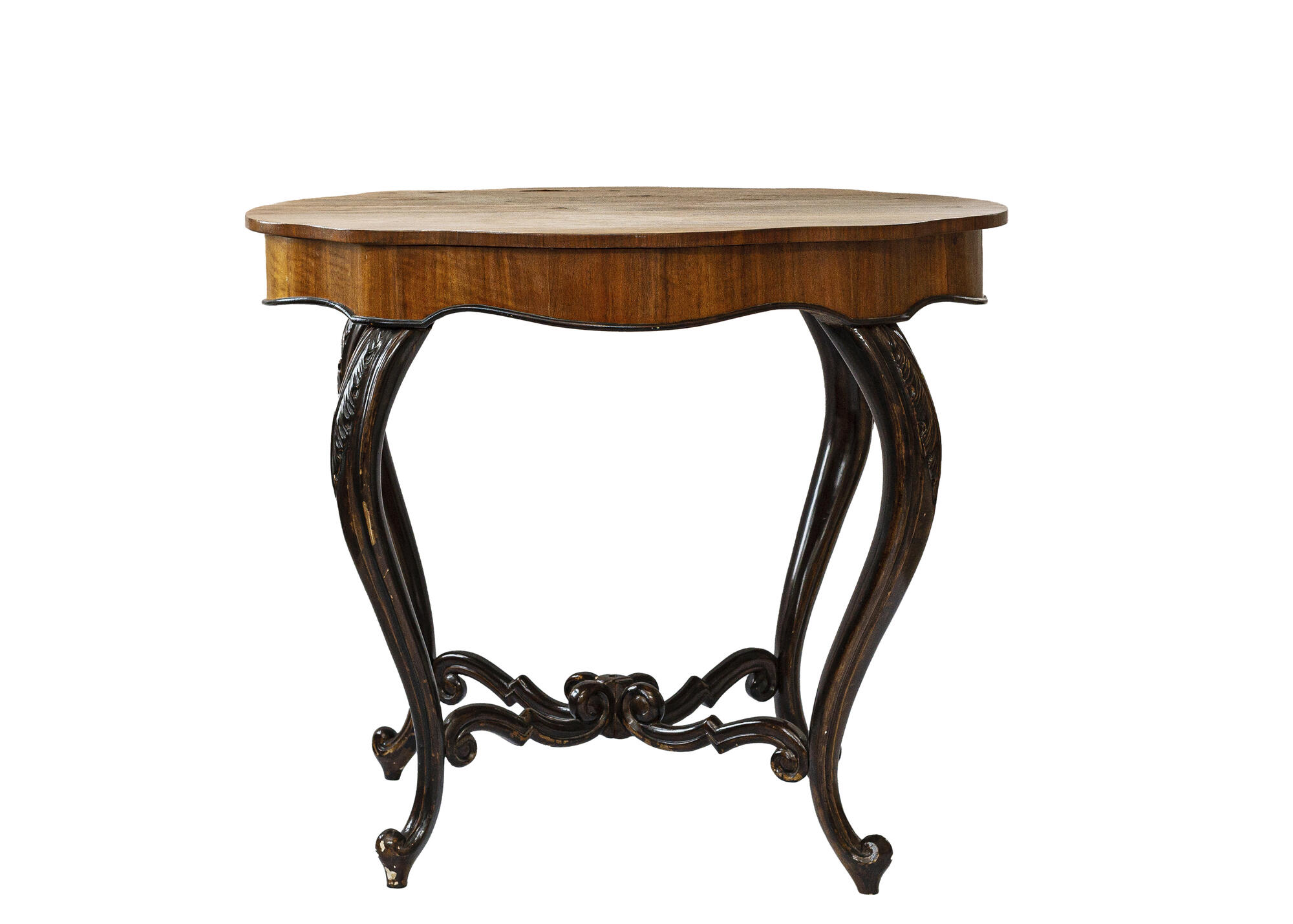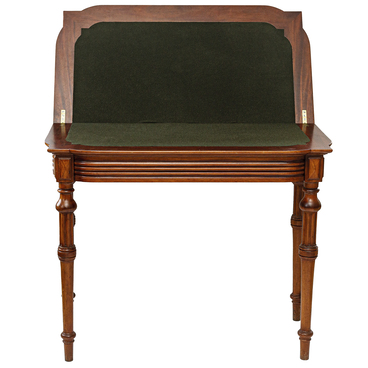In the 19th and early 20th centuries, tea drinking was an expensive and fashionable pastime in merchant’s estates. This ceremony required the appropriate entourage. A variety of tea tables was an obligate accessory, which demonstrated the taste and status of their owners.
The antique oval table, displayed at the exhibition of the estate, belonged to the family of famous Tyumen merchants and patrons of the arts the Kolokolnikovs. Elena Kolokolnikova (married name Trofimova) was its owner.
Elena’s grandfather, Ivan Kolokolnikov, purchased the merchant Ikonnikov’s mansion in the late 1880s and completely rebuilt it, turning it into a miniature palace with enfilades of rooms; fireplaces decorated with tiles, with the rich stucco molds and carved decorations.
The table is made in the “cabriole” style. It appeared in Europe in the eighteenth century. The distinctive feature of these pieces was their curved shaped legs.
In France, the furniture in the “cabriole” style became popular during the reign of King Louis XV, who was in power from 1710 to 1774. Later this style was transformed into the famous “rococo”.
In Britain, the cabriole style was called either the “Queen Anne style” or the “Chippendale style” — after the famous London furniture maker Thomas Chippendale. Although Queen Anne reigned from 1702 to 1714, the style named after her was popular in England until 1760.
Dutch merchants of the East India Company brought similar pieces of furniture to Europe from China. Dutch furniture makers used authentic Chinese lacquer panels and incorporated them into the furniture of their own making. This is how Dutch tables and chairs made of ebony and inlaid with mother-of-pearl and curved Chinese legs appeared.
Despite changing styles and fashions, the curved form of “cabriole” furniture legs remained popular for several centuries. For these, walnut wood was most often used, but also poplar, maple, or cherry. Such legs were rather difficult to make, but due to their shape, they were particularly durable.
The antique oval table, displayed at the exhibition of the estate, belonged to the family of famous Tyumen merchants and patrons of the arts the Kolokolnikovs. Elena Kolokolnikova (married name Trofimova) was its owner.
Elena’s grandfather, Ivan Kolokolnikov, purchased the merchant Ikonnikov’s mansion in the late 1880s and completely rebuilt it, turning it into a miniature palace with enfilades of rooms; fireplaces decorated with tiles, with the rich stucco molds and carved decorations.
The table is made in the “cabriole” style. It appeared in Europe in the eighteenth century. The distinctive feature of these pieces was their curved shaped legs.
In France, the furniture in the “cabriole” style became popular during the reign of King Louis XV, who was in power from 1710 to 1774. Later this style was transformed into the famous “rococo”.
In Britain, the cabriole style was called either the “Queen Anne style” or the “Chippendale style” — after the famous London furniture maker Thomas Chippendale. Although Queen Anne reigned from 1702 to 1714, the style named after her was popular in England until 1760.
Dutch merchants of the East India Company brought similar pieces of furniture to Europe from China. Dutch furniture makers used authentic Chinese lacquer panels and incorporated them into the furniture of their own making. This is how Dutch tables and chairs made of ebony and inlaid with mother-of-pearl and curved Chinese legs appeared.
Despite changing styles and fashions, the curved form of “cabriole” furniture legs remained popular for several centuries. For these, walnut wood was most often used, but also poplar, maple, or cherry. Such legs were rather difficult to make, but due to their shape, they were particularly durable.



